Megaliths Day Tour
We’re back on the tour bus once again. Today’s itinerary will take us to the northern and eastern sections of the island, and has the grandiose name “Megaliths”. It’s more big statues like we saw yesterday, but I suppose something like “Yet Another Day Looking at Big Heads” doesn’t have quite the same ring to it. Nevertheless, it’s bought and paid for, so no turning back now…
The first stop is an area called Hanga Poukura. Back in the day, this was one of the more impressive displays of Moai, with the construction of the platform exceptionally crafted in the Inca style. Today though, it is mostly a ruin, with a long row of statues lying face down on the ground.
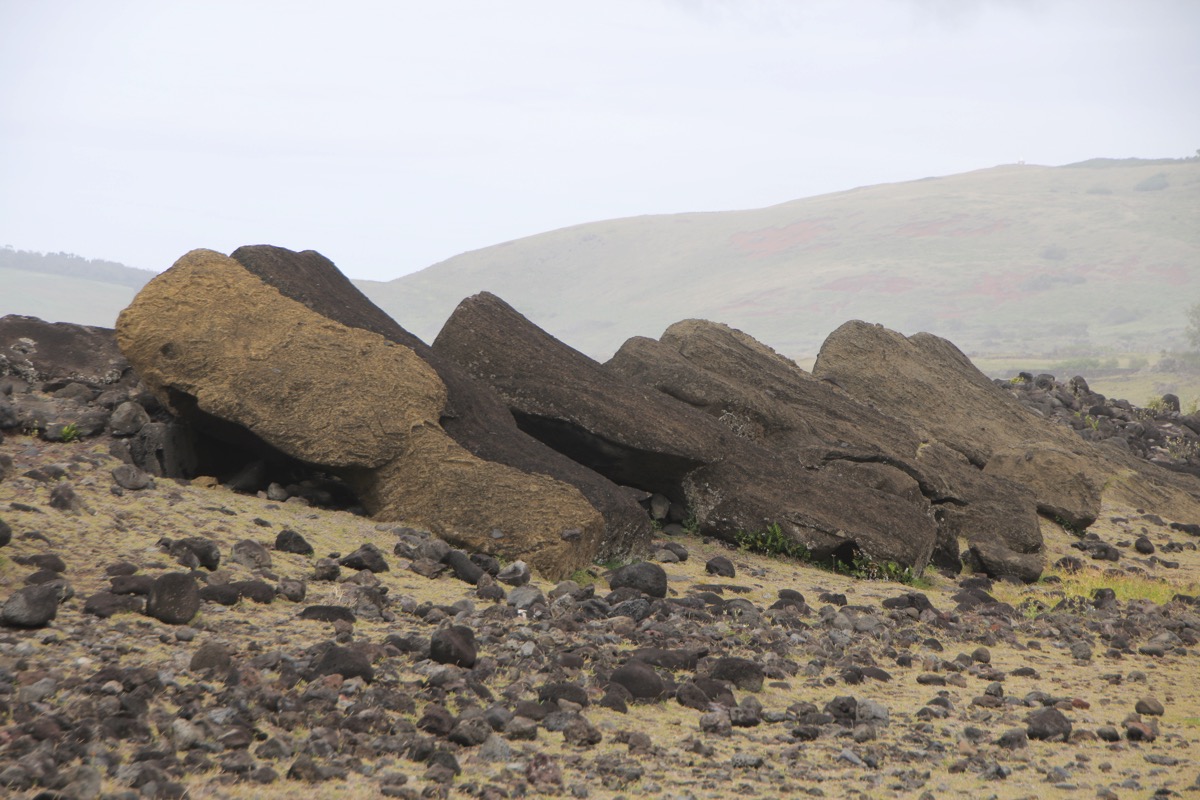
As with most of the moai, this site is right near the ocean, and when conditions are right, there is supposedly a blow hole here worth seeing. It’s not happening for us today unfortunately though, so we’ll have to take the guide’s word for it. Wandering about however, I do come across this interesting sign, which I think means the Rapa Nui coined the phrase, “Don’t come up on me”, long before Latrell Sprewell made it famous before trying to choke PJ Carlesimo.
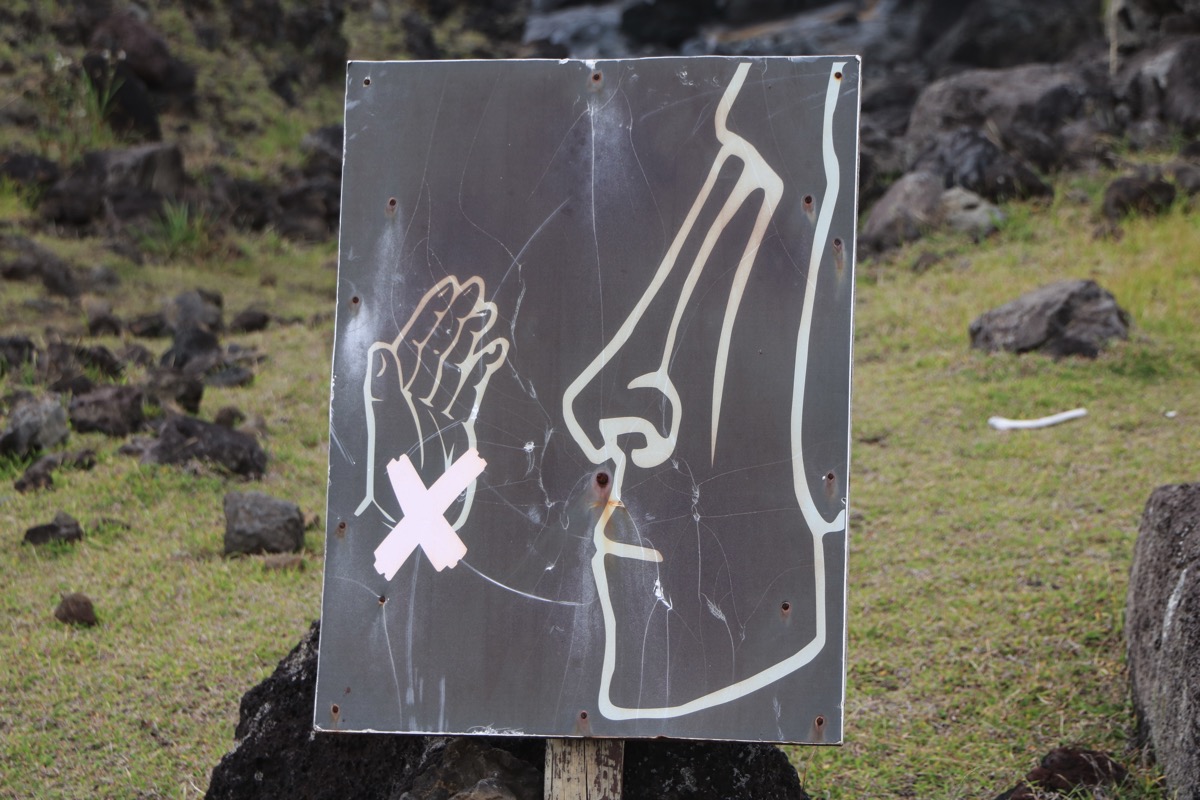
Next up is Te Pito Kura. We stopped here a few days back when we were on our own, not really knowing what it was, so this time we get the story to go with it. At first glance, it looks like just another face down statue, however, this was the largest Moai ever moved to it’s final location, and once of the last ones seen standing (before the restorations). It clocks in at an impressive 10 meters tall and weighs 70 tons. The top knot lying nearby adds another 2 meters and 10 more tons.
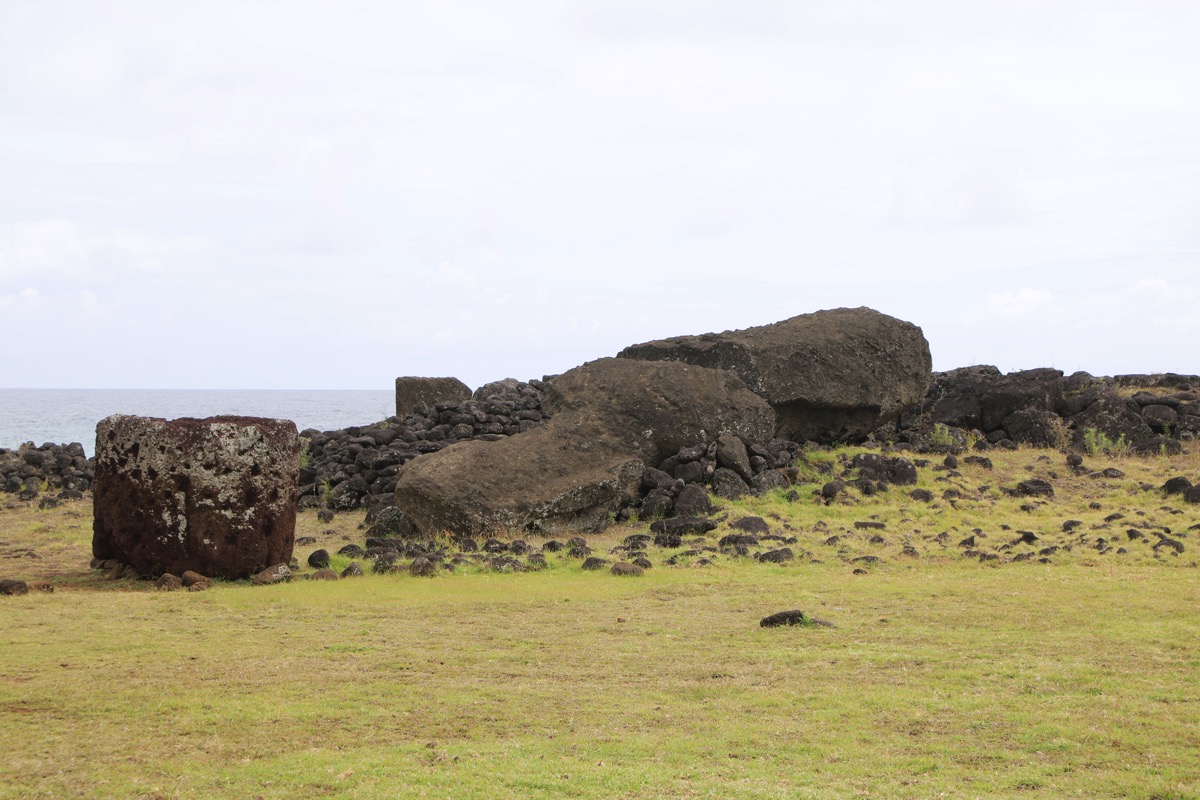
Around the left side of the platform, there is large, round rock that is clearly out of place in this environment. It is smoothly polished and has a high enough iron content to play havoc with a compass. Legend has it that it was transported to Easter Island by the first king, Hotu Motua’a, to bring mana to this new land. The rock wall around is a recent addition to keep tourists from standing on it. True story.
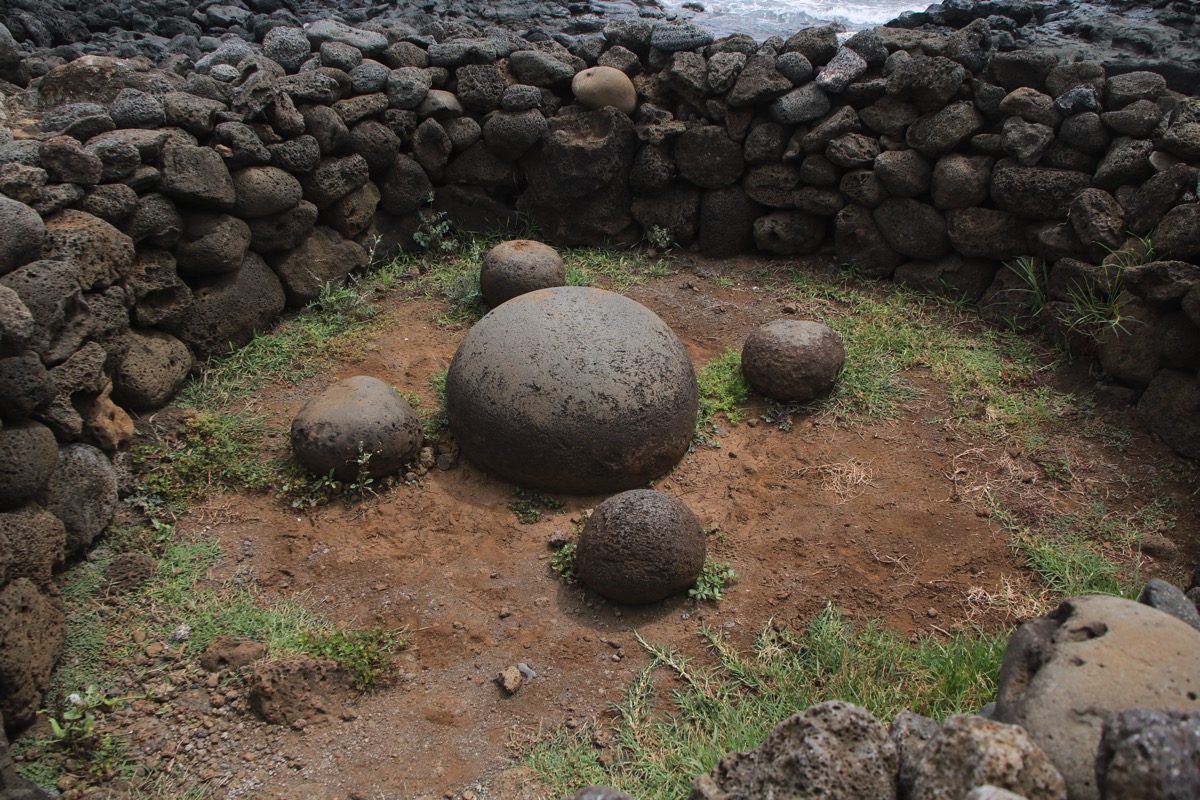
At this point, we’re close to Anakena, and since there are a few restaurants near the beach, it makes a good stop for lunch. We’re brown-bagging it, but manage to find a quiet table under a tree, that we share with my new friend Chickenee (not Chickadee, Chickenee). That last part will only make sense to Joey.
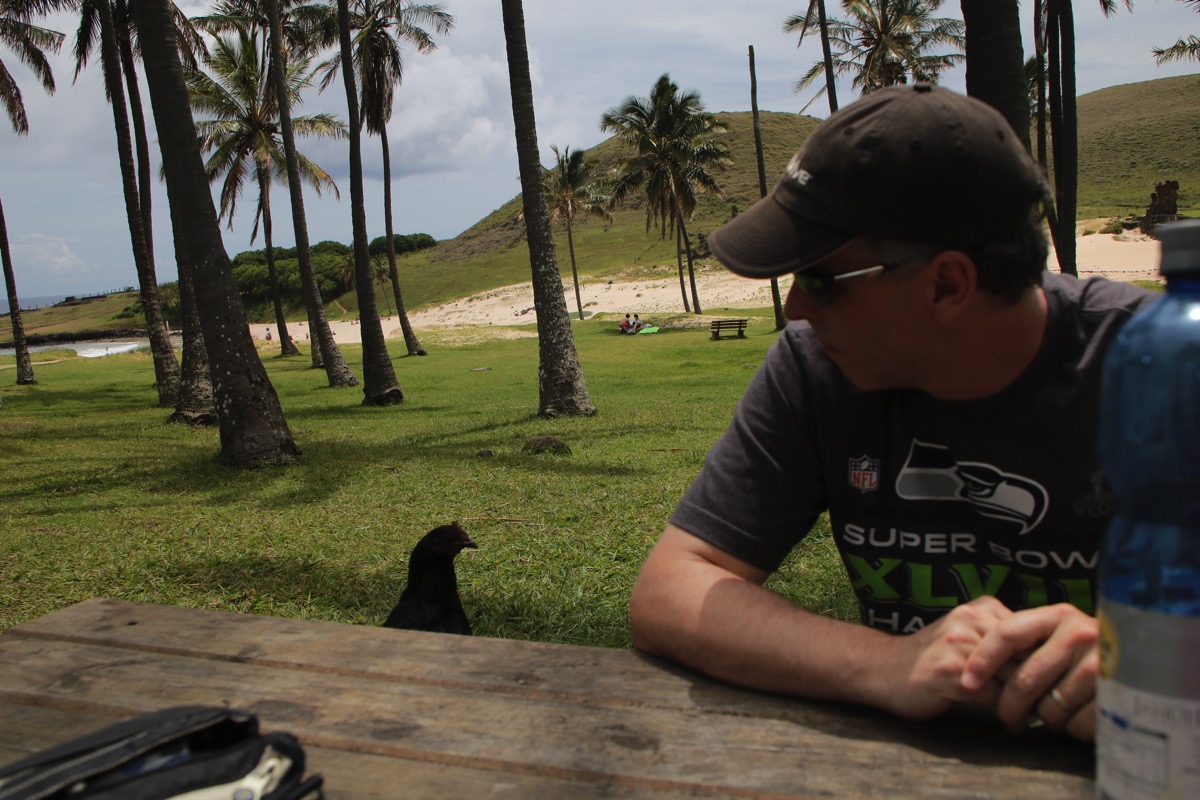
We already have some good pictures of the Moai here, so only one to add today, but more importantly, we get some history. As I wrote a few days back, this area is believed to be where the first Rapa Nui landed and is where the first of the Moai were restored by Thor Heyerdahl in the 1950s. The statues here are in particularly good shape as, once they were tipped over, they were quickly covered by the drifting sand and preserved from the elements.
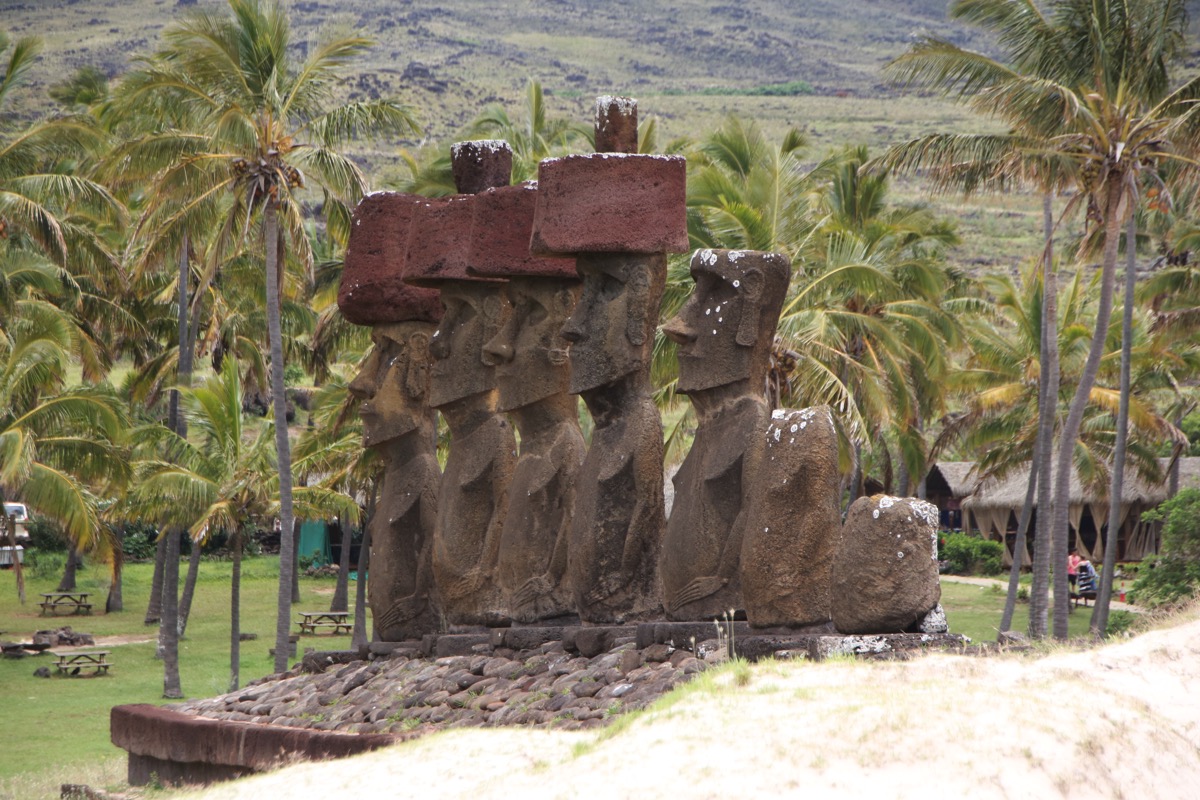
There is one more platform to visit on our tour, this one at Tongariki. This is probably the most famous collection of Moai on the island as most guide books, travel brochures, etc. have pictures of it. Like the others, it was destroyed by the Rapa Nui during their civil war, followed by a tsunami in the 1960s that carried many of the statues further inland. It was restored in the 1990s with funding from the Japanese, and is the current titleholder for both largest platform on Easter Island (with 15 Moai), and the heaviest Moai to reach its final destination – a behemoth weighing 86 tons.
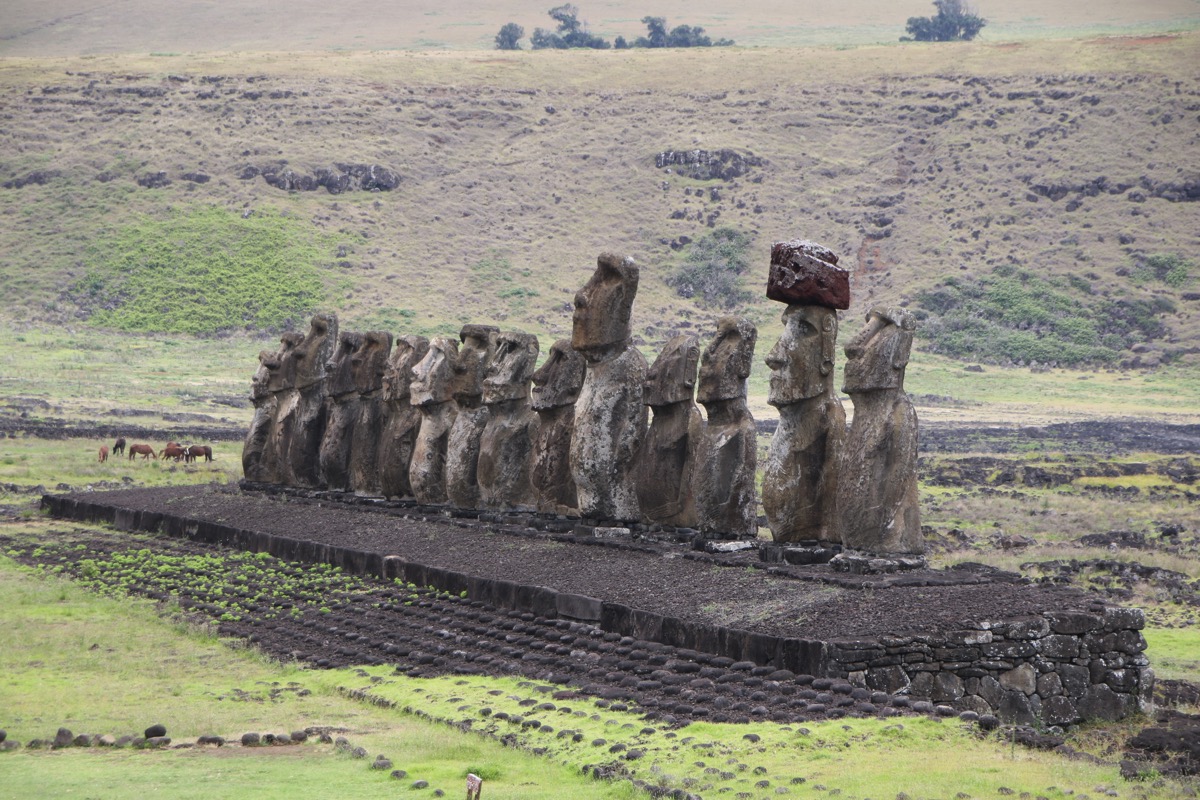
While many of the original statues were moved back to the platform during the restoration, some remain where the tsunami left them, including this unlucky fellow (the volunteer in the pink shirt was not carried here by the tsunami but was included here for context).
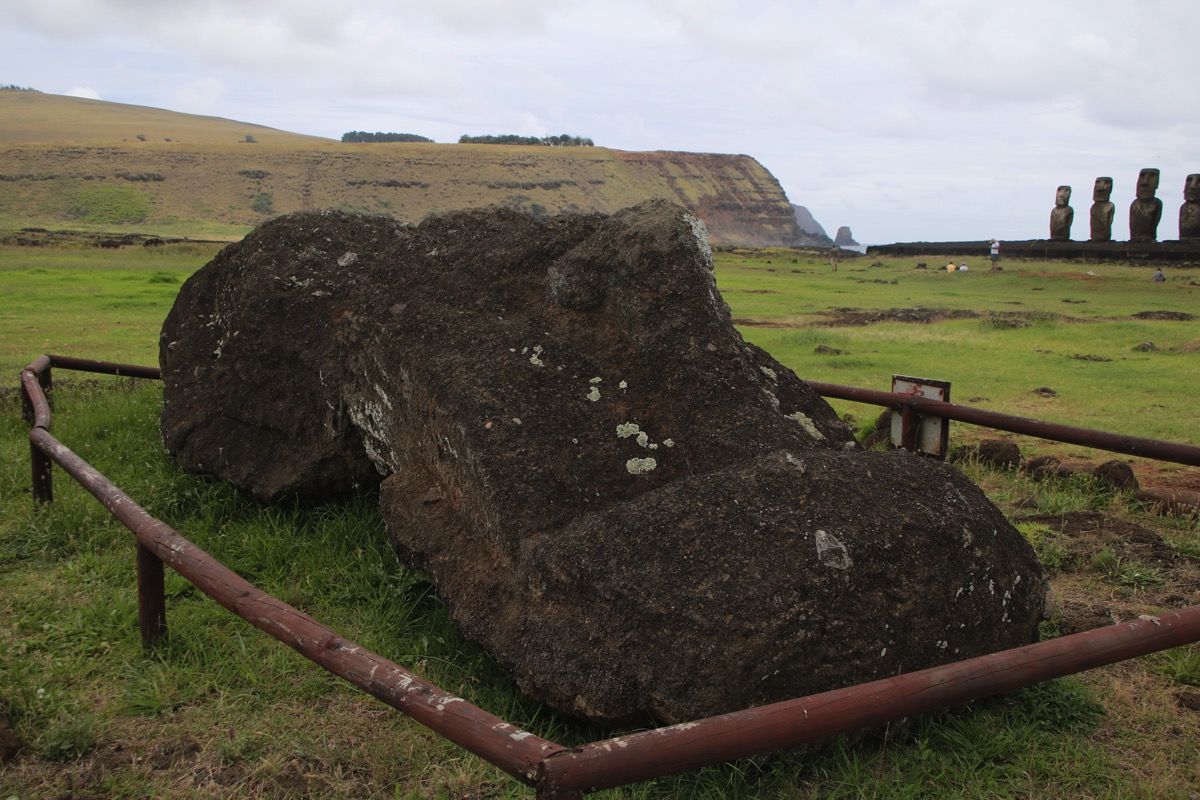
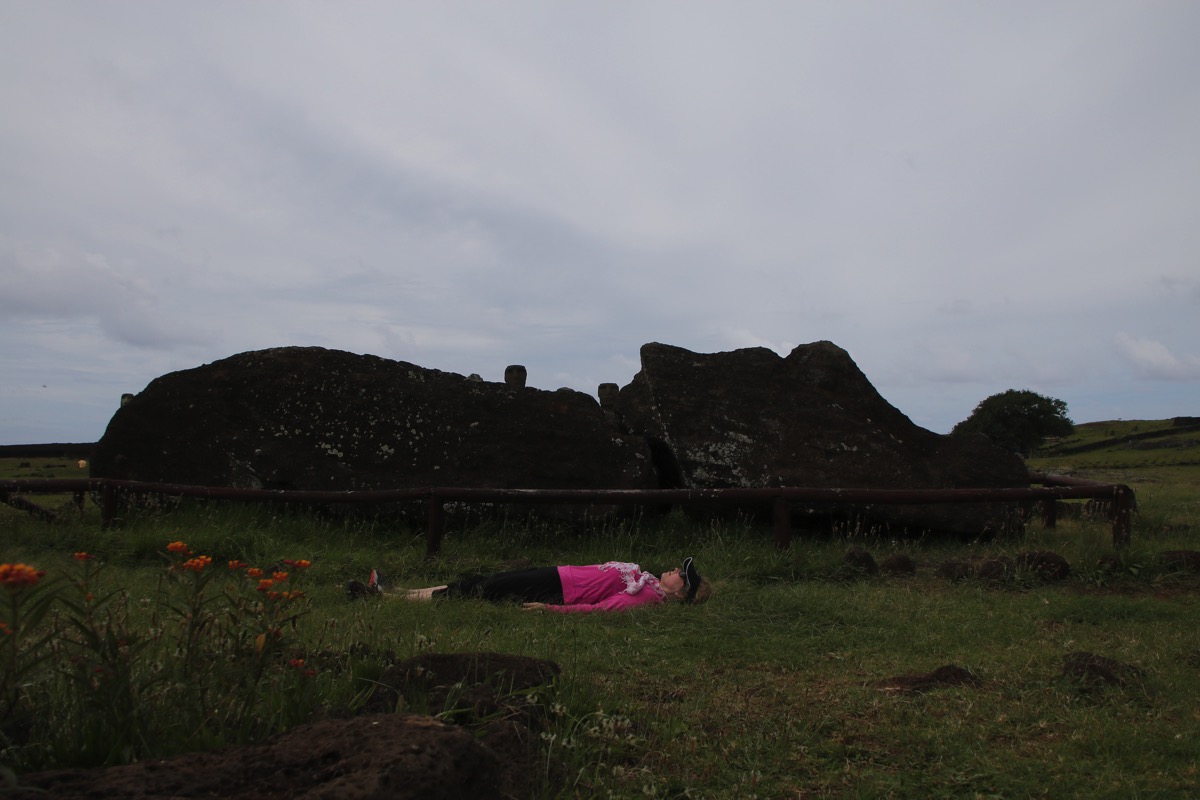
As we finish up here, there is an unusual lull in tour bus traffic, providing a few minutes of solitude to just lay back and soak in all that we are seeing. Its a nice break from the constant pace of our tour and provides an opportunity to try and fix the moment into memory.
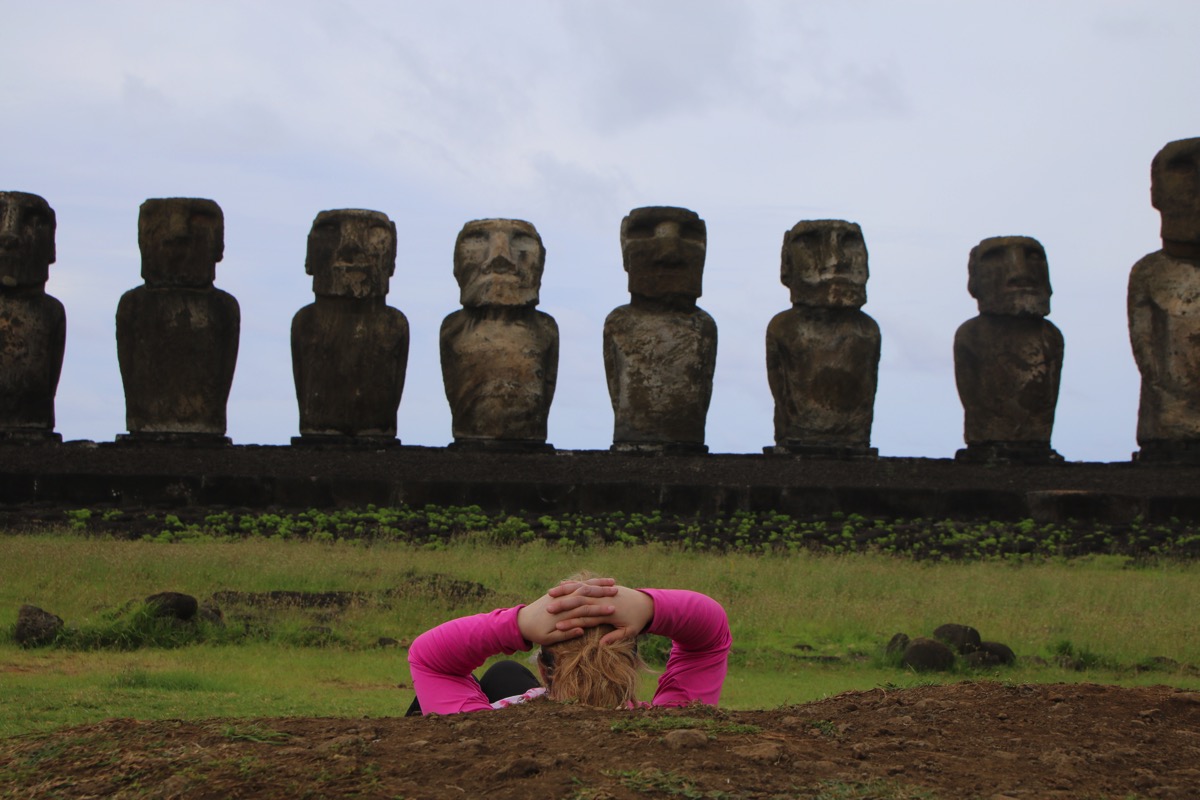
Our last stop is arguably the best, Rano Raraku. The slopes of this volcano are the source of all of the giant Moai on the island and images of them half-buried in the ground there are what usually come to mind when you hear the words “Easter Island”. Unlike monuments that typically are commissioned individually, the Rapa Nui maintained a Moai factory of sorts, where statues were constantly being carved from the rock. When a village required a Moai to hold the soul of a departed leader, one would be chosen from the inventory on Rano Raraku, transported to its final location, and there have the final details carved into it to make it resemble the individual.
Nearly 400 Moai remain on Rano Raraku, scattered randomly and in various states of completion.
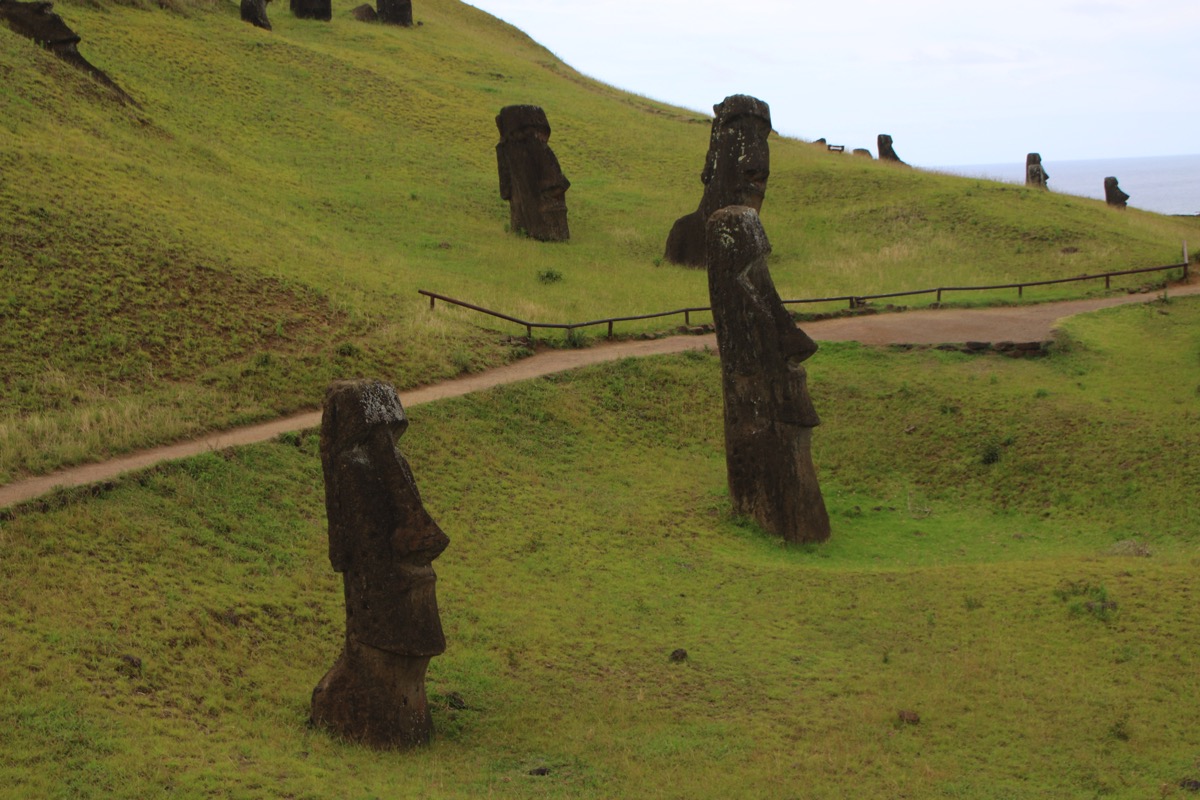
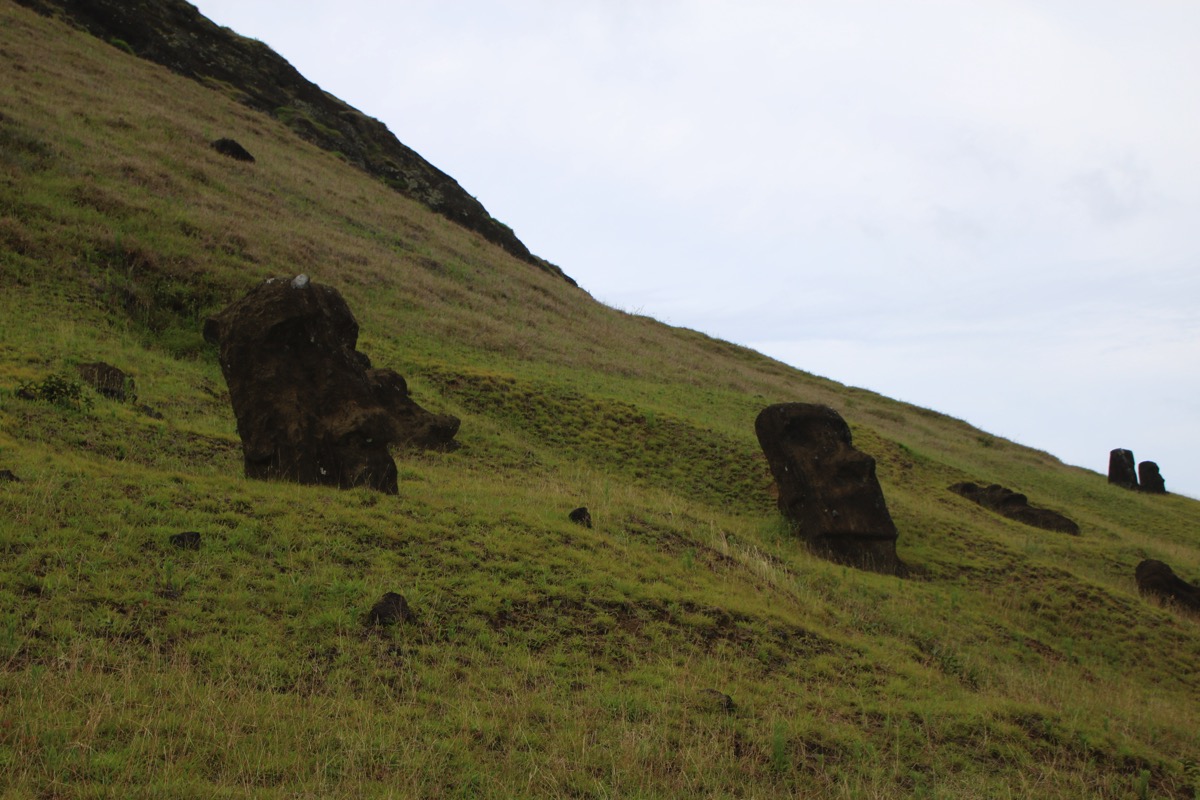
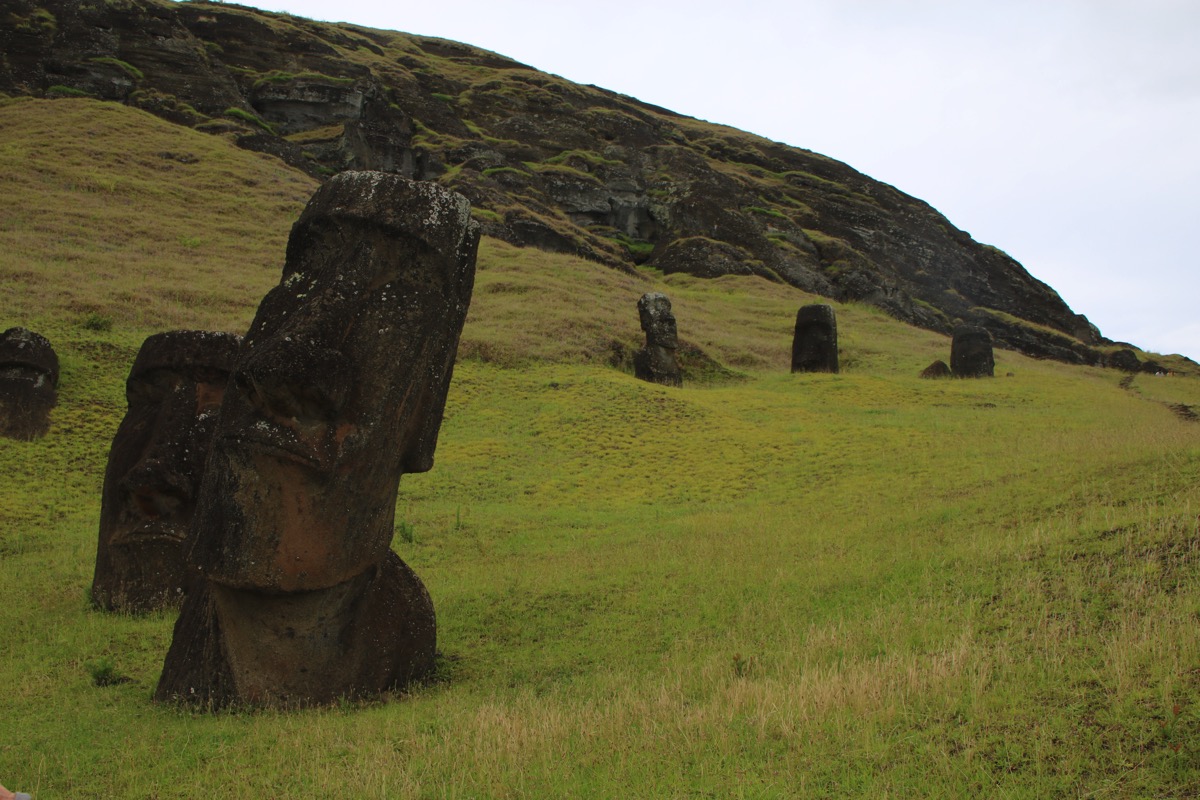
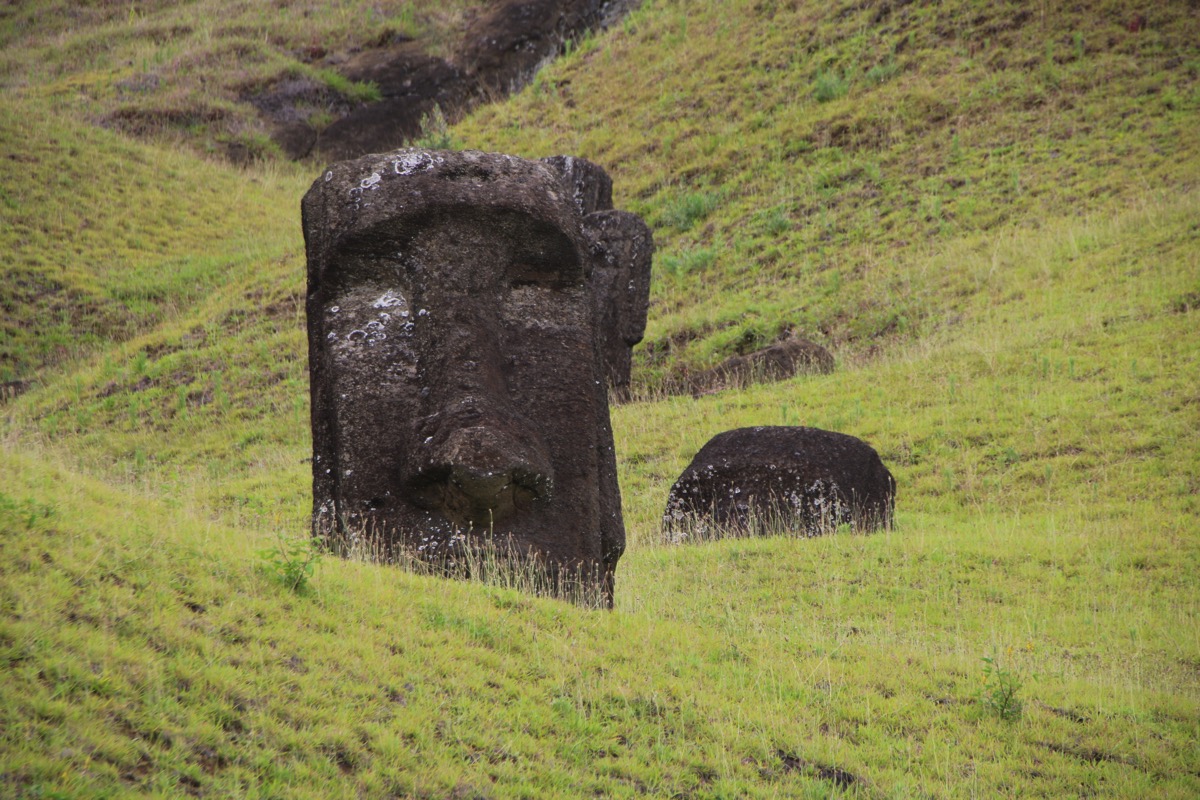
Some still remain attached to the volcano, including the largest Moai ever carved – a 270 ton behemoth affectionately called El Gigante. He’s a bit difficult to spot in the second picture below, sort of a Rapa Nui version of Where’s Waldo?
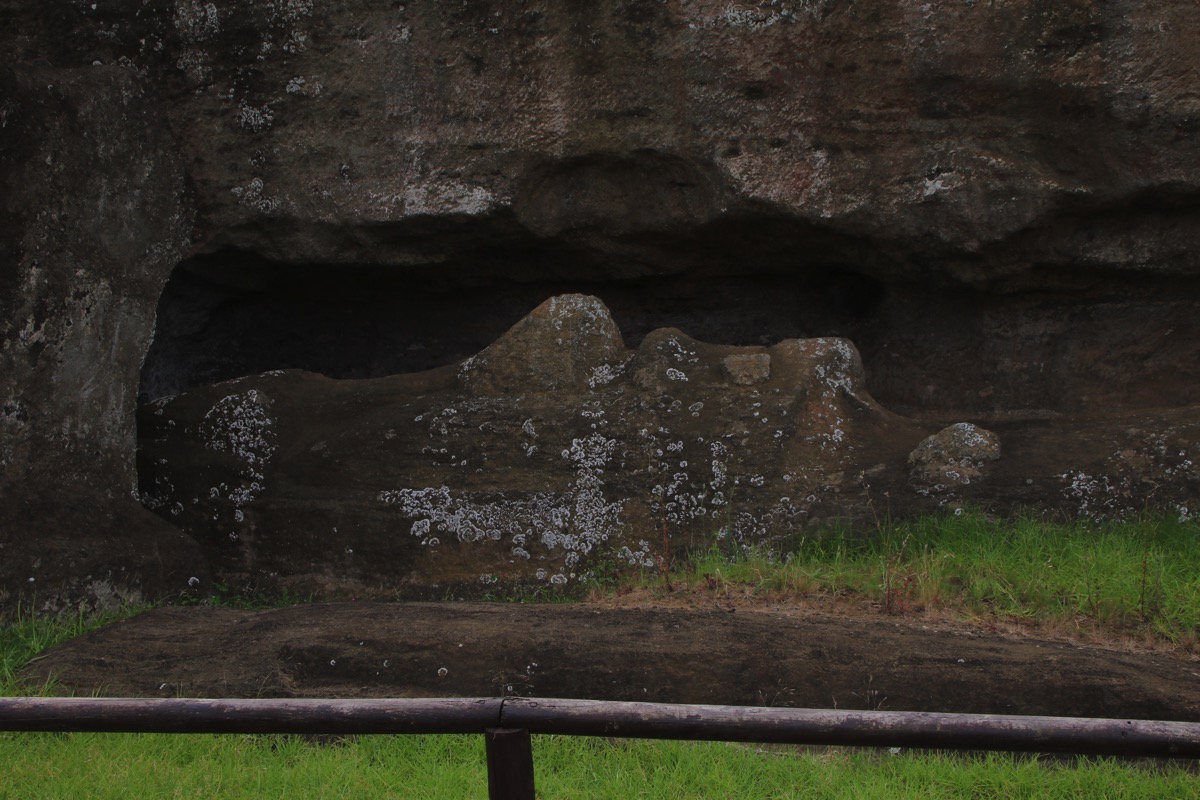
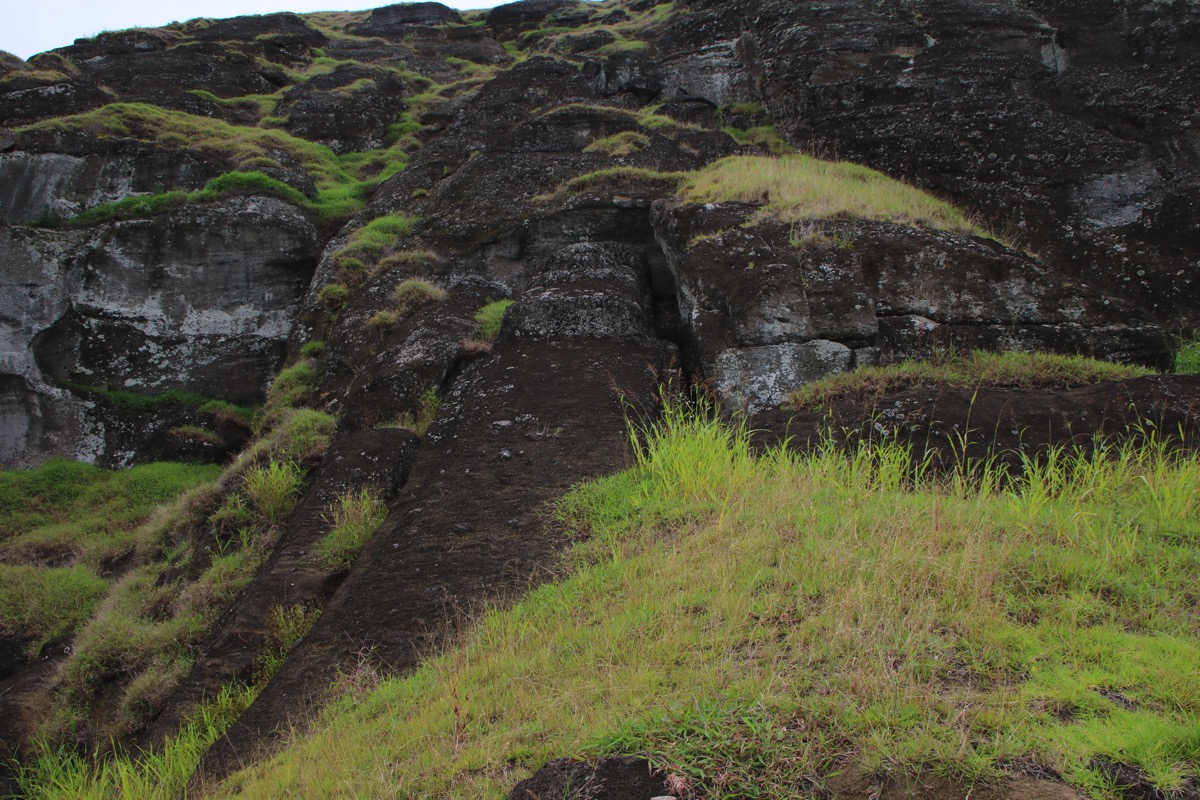
Similar to Orongo, the crater of Rano Raraku contains a freshwater lake that supports a much more diverse habitat than elsewhere on the island. It’s a sensitive area, and since there are no rivers or streams to replenish it, this classy fellow from our tour decides to pitch in and try to top it up.
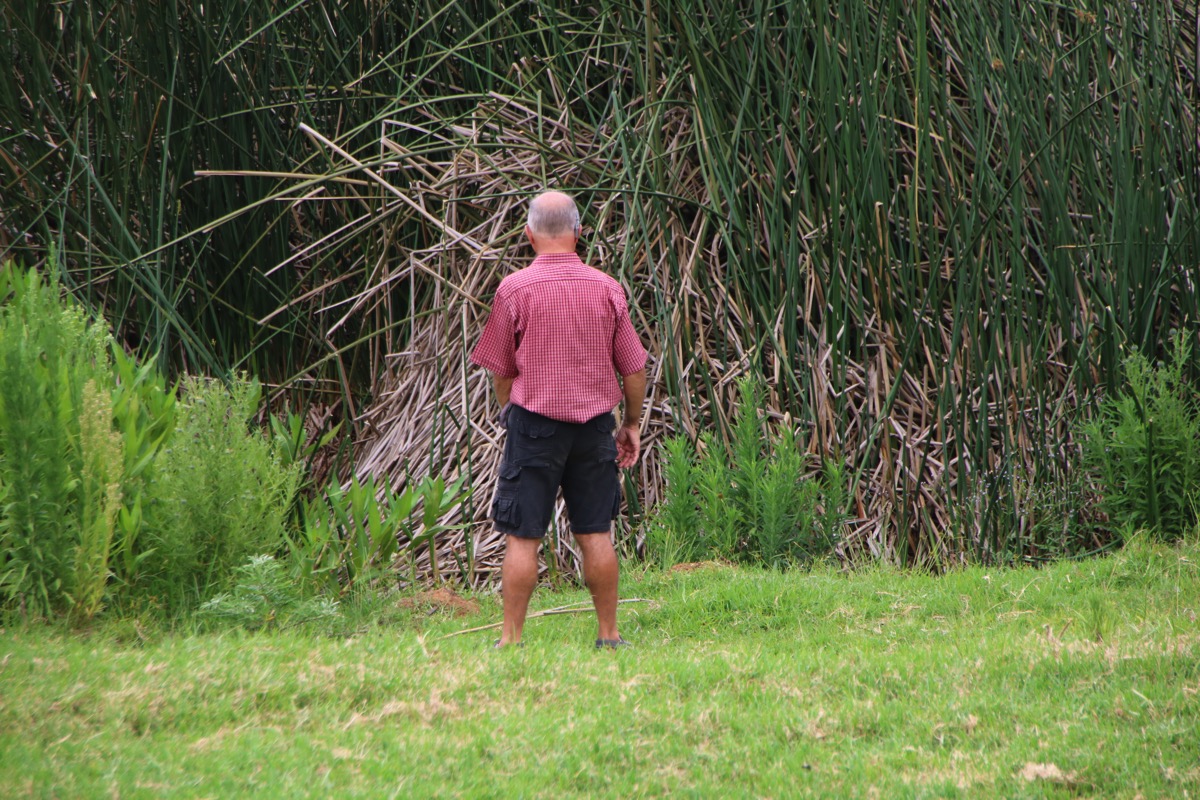
All the walking has left my fellow traveler and I a bit parched, and like the ballpark, we’re part of a captive audience. No vacation is complete however, without the obligatory $4 Diet Coke.
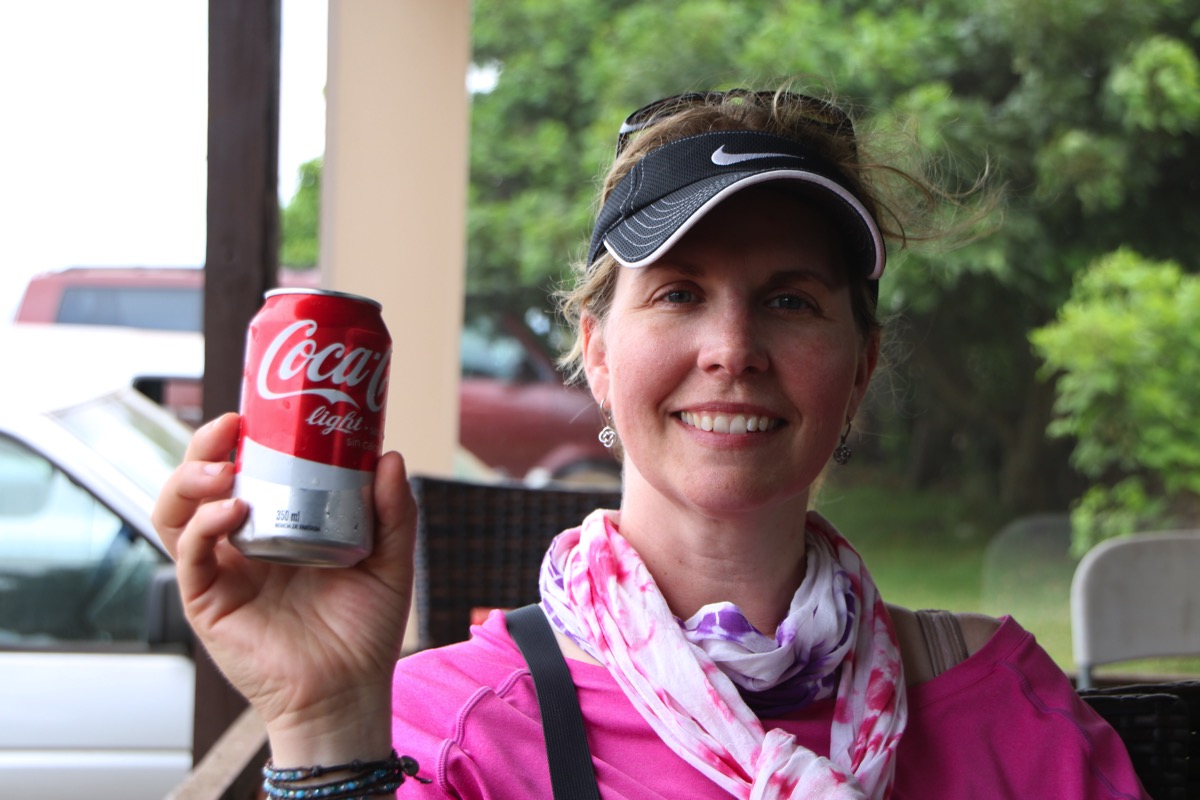
We’re nearing the end of both our Easter Island trip and Chile overall. Tomorrow is a free day that will give us a chance to go back and visit a few of our favorite spots, and after that, we’re off to Santiago. As always, these final days seem to just fly by.